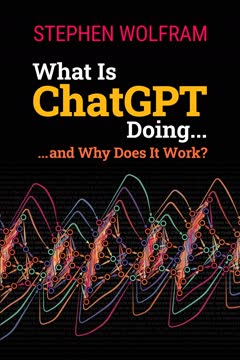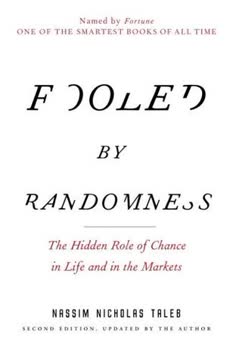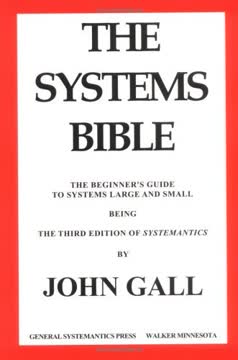Key Takeaways
1. Radical uncertainty defines our world, not probabilistic risk
We simply do not know.
Uncertainty is pervasive. In most real-world situations, we face radical uncertainty - a state where we cannot enumerate all possible outcomes or assign meaningful probabilities to them. This is fundamentally different from probabilistic risk, where outcomes and their likelihoods are known.
Examples abound:
- Historical events: Napoleon's invasion of Russia, Columbus's voyage to the Americas
- Business decisions: The evolution of the computer industry, the rise of smartphones
- Political choices: The Cuban Missile Crisis, Brexit
Implications:
- Traditional decision-making models based on probabilities often fail in the face of radical uncertainty
- We must develop alternative approaches to navigate an unpredictable world
2. Narratives, not probabilities, guide decision-making under uncertainty
No one ever made a decision because of a number. They need a story.
Narratives shape understanding. Humans naturally construct and rely on narratives to make sense of complex situations and guide their decisions. These stories provide a framework for interpreting events and anticipating potential outcomes.
Key aspects of narrative thinking:
- Helps organize and prioritize information
- Allows for the integration of diverse perspectives and experiences
- Facilitates communication and collective decision-making
Real-world applications:
- Business strategy: Steve Jobs waiting for "the next big thing" at Apple
- Political leadership: Churchill's wartime speeches and decision-making
- Scientific discovery: The development of germ theory in medicine
3. Small-world models offer insights but can't fully capture real-world complexity
All models are wrong, but some are useful.
Models have limits. While small-world models in economics and finance can provide valuable insights, they often fail to capture the full complexity of real-world situations. Recognizing these limitations is crucial for effective decision-making.
Characteristics of small-world models:
- Well-defined parameters and outcomes
- Based on simplifying assumptions
- Often rely on probabilistic reasoning
Dangers of over-reliance:
- The 2008 financial crisis: Risk models failed to account for systemic risks
- Economic forecasting: Consistently poor track record in predicting major events
Balanced approach:
- Use models to gain insights and frame problems
- Complement model-based analysis with narrative reasoning and real-world experience
4. Effective decision-making requires challenging prevailing narratives
The fact that we were able to talk, debate, argue, disagree, and then debate some more was essential in choosing our ultimate course.
Challenge fosters better decisions. Good decision-makers actively seek out diverse perspectives and encourage challenges to prevailing narratives. This process helps identify blind spots and strengthens the final decision.
Techniques for fostering productive challenge:
- Devil's advocacy: Assign someone to argue against the prevailing view
- Red team/blue team exercises: Create competing groups to analyze a problem
- Diverse expertise: Include people with varied backgrounds and experiences
Historical examples:
- Kennedy's handling of the Cuban Missile Crisis
- Lincoln's "Team of Rivals" cabinet during the Civil War
Organizational implications:
- Create a culture that values open debate and dissenting opinions
- Avoid groupthink by actively seeking out alternative viewpoints
5. Evolutionary rationality trumps axiomatic rationality in large worlds
Humans are successful at adapting to the environment in which they find themselves, and have not evolved to perform rapid calculations of well-defined problems at which computers excel.
Human reasoning is adaptive. Our cognitive processes have evolved to deal with the complexities and uncertainties of the real world, rather than to solve abstract mathematical problems. This "evolutionary rationality" is often more effective in navigating radical uncertainty than formal logical approaches.
Key aspects of evolutionary rationality:
- Relies on heuristics and pattern recognition
- Integrates emotions and intuition into decision-making
- Adapts to changing environments and contexts
Contrasts with axiomatic rationality:
- Axiomatic approach assumes complete information and well-defined problems
- Often fails to account for real-world complexities and ambiguities
Implications:
- Decision-making processes should leverage human intuition and experience
- Formal models and algorithms should complement, not replace, human judgment
6. Collective intelligence is key to navigating radical uncertainty
Human intelligence is collective intelligence, and that is the source of the extraordinary human economic achievement.
Collaboration enhances decision-making. In a world of radical uncertainty, no single individual possesses all the necessary knowledge and insights. Collective intelligence - the combined knowledge and skills of a group - is crucial for effective problem-solving and innovation.
Benefits of collective intelligence:
- Diverse perspectives lead to more robust solutions
- Shared knowledge reduces individual blind spots
- Group processes can challenge and refine ideas
Examples of collective intelligence in action:
- Open-source software development
- Scientific research collaborations
- Crowd-sourced problem-solving platforms like InnoCentive
Fostering collective intelligence:
- Create environments that encourage open communication
- Develop systems for knowledge sharing and collaboration
- Value and integrate diverse expertise and experiences
7. Financial models are useful but dangerous when taken too literally
The numbers which were used in these calculations are invented.
Models have limitations. While financial models can provide valuable insights, they often rely on simplifying assumptions and invented numbers. Taking these models too literally can lead to dangerous misconceptions about risk and value.
Common pitfalls:
- Overconfidence in model predictions
- Neglecting factors not captured by the model
- Assuming past patterns will continue indefinitely
Notable failures:
- Long-Term Capital Management collapse in 1998
- Underestimation of systemic risk leading to the 2008 financial crisis
Balanced approach:
- Use models as one input among many in decision-making
- Continuously question and update model assumptions
- Complement quantitative analysis with qualitative judgment
8. Robustness and resilience, not certainty, are the keys to managing uncertainty
Radical uncertainty means that it is rarely possible to know the complete set of possible explanations.
Embrace uncertainty. Instead of seeking illusory certainty, focus on building systems and strategies that are robust and resilient in the face of unexpected events. This approach acknowledges the limitations of our knowledge and prepares us for a range of potential outcomes.
Key principles:
- Diversification: Spread risks across multiple domains
- Flexibility: Build in the ability to adapt to changing circumstances
- Redundancy: Create backup systems and contingency plans
Applications:
- Investment strategy: Broad diversification across asset classes and geographies
- Business planning: Scenario planning and stress-testing
- Public policy: Designing regulations that can withstand various economic conditions
Mindset shift:
- Move from prediction to preparation
- Focus on building capabilities rather than forecasting specific outcomes
- Cultivate adaptability and continuous learning
Last updated:
FAQ
What is Radical Uncertainty: Decision-Making Beyond the Numbers by John Kay and Mervyn King about?
- Explores decision-making limits: The book examines how traditional quantitative models and forecasts often fail to capture the complexity and unpredictability of real-world decision-making.
- Focus on radical uncertainty: It introduces the concept of radical uncertainty, where future events cannot be assigned meaningful probabilities or fully anticipated.
- Emphasizes narratives and judgment: Kay and King argue for the importance of narratives, practical knowledge, and collective intelligence in navigating uncertainty in economics, business, and policy.
Why should I read Radical Uncertainty: Decision-Making Beyond the Numbers by John Kay and Mervyn King?
- Challenges conventional wisdom: The book critiques the overreliance on optimization, models, and forecasts in economics, business, and finance, showing their limitations in real-world situations.
- Offers practical decision-making insights: Readers gain a richer framework for making decisions under uncertainty, emphasizing judgment, communication, and adaptability.
- Broad interdisciplinary relevance: Drawing from history, psychology, law, and economics, the book is valuable for policymakers, business leaders, and anyone interested in how decisions are made.
What are the key takeaways from Radical Uncertainty: Decision-Making Beyond the Numbers by John Kay and Mervyn King?
- Numbers don’t tell all: Quantification and models can create a false sense of understanding, often missing the true complexity of real-world problems.
- Narratives are essential: Humans use stories to interpret unique events, communicate decisions, and guide action when probabilities are unavailable.
- Models have limits: Small-world models are useful but incomplete; many real-world events cannot be assigned meaningful probabilities or predicted reliably.
- Collective intelligence matters: Effective decision-making relies on communication, challenge, and cooperation among diverse perspectives, not just isolated optimization.
What is "radical uncertainty" as defined in Radical Uncertainty: Decision-Making Beyond the Numbers by John Kay and Mervyn King?
- Unknowable future: Radical uncertainty refers to situations where the future is not just unknown but fundamentally unknowable, making it impossible to list all possible outcomes or assign meaningful probabilities.
- Contrast with risk: Unlike risk, which involves measurable variability and known probabilities, radical uncertainty deals with ambiguity, vagueness, and ill-defined problems.
- Implications for models: Models that assume known probabilities or optimization are often misleading under radical uncertainty, as they pretend to knowledge that does not exist.
How do John Kay and Mervyn King distinguish between "risk" and "uncertainty" in Radical Uncertainty: Decision-Making Beyond the Numbers?
- Risk as measurable variability: Risk involves situations where outcomes and their probabilities are known or can be estimated, allowing for quantification and pricing.
- Uncertainty as unknowable: Radical uncertainty involves unknown or unknowable outcomes and probabilities, making it impossible to assign reliable probabilities or optimize decisions.
- Consequences of confusion: Treating radical uncertainty as risk leads to overconfidence in models and can create systemic vulnerabilities, as seen in financial crises.
How do John Kay and Mervyn King define and use "narratives" in decision-making in Radical Uncertainty: Decision-Making Beyond the Numbers?
- Narratives as sense-making tools: Narratives help humans interpret complex, uncertain situations where probabilities are unavailable, providing coherence and credibility.
- Communication and social context: Narratives are essential for persuading others, eliciting cooperation, and making collective decisions under uncertainty.
- Evolving and challengeable: Good narratives are open to challenge and evolve over time, much like scientific paradigms, ensuring adaptability and resilience.
What is the difference between "puzzles" and "mysteries" in decision-making according to Radical Uncertainty: Decision-Making Beyond the Numbers by John Kay and Mervyn King?
- Puzzles are well-defined: Puzzles have clear rules and a single correct solution, solvable by probabilistic or logical reasoning (e.g., games of chance, engineering problems).
- Mysteries are ill-defined: Mysteries lack clear definitions, have no objectively correct answers, and involve vagueness and indeterminacy (e.g., geopolitical events, business strategy).
- Different approaches required: While puzzles can be addressed with optimization and probability, mysteries require narrative framing, judgment, and acceptance of ambiguity.
How do John Kay and Mervyn King critique the use of probabilities and optimization in economics and decision theory in Radical Uncertainty: Decision-Making Beyond the Numbers?
- Inapplicability in large worlds: Probabilistic models and optimization assume well-defined options and known probabilities, which rarely exist in real economic or political contexts.
- Model-based probabilities vs. reality: The authors highlight the danger of confusing model-based probabilities with real-world probabilities, as seen in the 2007–08 financial crisis.
- Limits of axiomatic rationality: Axiomatic definitions of rationality, which underpin expected utility maximization, fail to capture how real people make decisions under radical uncertainty.
What is the difference between "axiomatic rationality" and "evolutionary rationality" in Radical Uncertainty: Decision-Making Beyond the Numbers by John Kay and Mervyn King?
- Axiomatic rationality: Defined by adherence to logical axioms and maximization of expected utility, suitable for small, well-defined problems.
- Evolutionary rationality: Describes how humans have evolved cognitive and social abilities to cope with complex, uncertain worlds through heuristics, narratives, and cooperation.
- Practical decision-making: Evolutionary rationality better explains real-world behavior, including the use of rules of thumb, satisficing, and adaptive judgment rather than strict optimization.
How does Radical Uncertainty: Decision-Making Beyond the Numbers by John Kay and Mervyn King view the role of human intelligence versus artificial intelligence in decision-making under uncertainty?
- Different strengths: Humans excel at dealing with ill-defined, unique, and radically uncertain problems through narrative and judgment, while AI excels at well-defined, repeatable puzzles.
- Limits of AI: Even advanced AI systems rely on defined rules and repeated play, and cannot handle unique, complex political or economic decisions.
- Complementarity: AI should augment human decision-making, not replace it, as good judgment and context understanding remain uniquely human capabilities.
What practical advice or methods does Radical Uncertainty: Decision-Making Beyond the Numbers by John Kay and Mervyn King offer for living and making decisions in a radically uncertain world?
- Embrace uncertainty: Accept that perfect knowledge is impossible and that uncertainty is pervasive and unavoidable.
- Use narratives and communication: Build and revise stories collaboratively to make sense of complex situations and guide decisions.
- Focus on robustness and adaptability: Develop strategies and policies that are resilient to multiple possible futures rather than optimizing for a single predicted outcome.
What are some real-world examples of model misuse discussed in Radical Uncertainty: Decision-Making Beyond the Numbers by John Kay and Mervyn King?
- Financial risk models: Value at risk models underestimated risks before the 2007–08 crisis due to reliance on historical data and assumptions of stationarity.
- Transport project appraisals: The UK’s WebTAG model used invented numbers and ignored broader impacts, leading to misleading conclusions about infrastructure investments.
- Fisheries and health models: Complex models in Canadian fisheries and WHO HIV projections failed due to oversimplification or neglect of key behavioral factors, demonstrating the dangers of overreliance on quantitative models.
Review Summary
Radical Uncertainty receives mixed reviews, with an average rating of 3.90 out of 5. Many readers appreciate the book's critique of overreliance on mathematical models in economics and decision-making under uncertainty. The authors' expertise and engaging writing style are praised. However, some find the book repetitive and overly long. Critics argue that the main ideas could have been conveyed more concisely. Despite these drawbacks, many readers consider it an important contribution to the field, offering valuable insights into dealing with complex, unpredictable situations.
Similar Books









Download PDF
Download EPUB
.epub digital book format is ideal for reading ebooks on phones, tablets, and e-readers.





